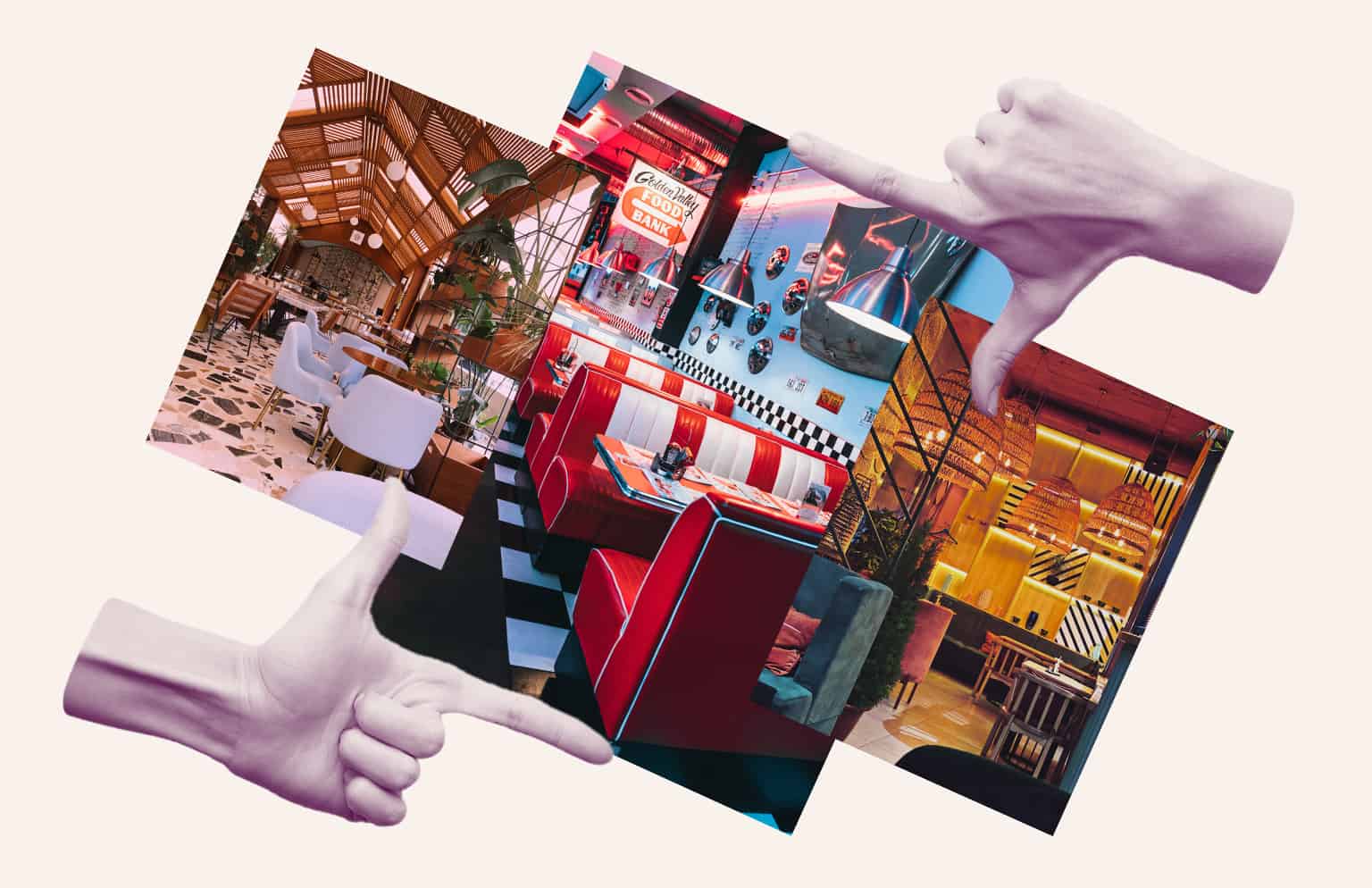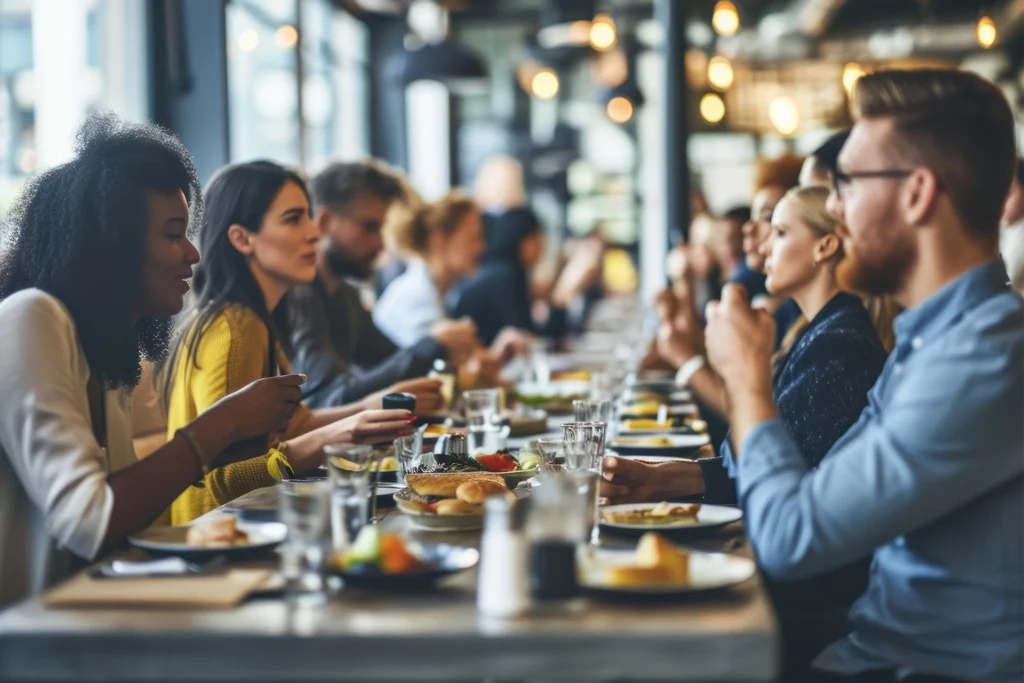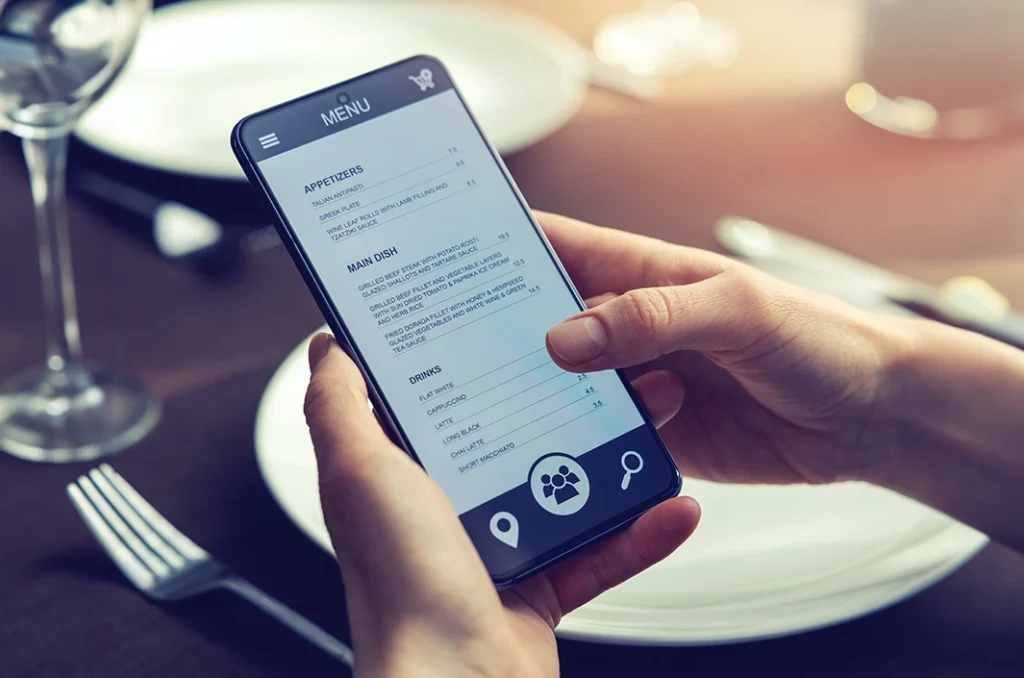Creating an interior design that reflects a restaurant’s personality traits is crucial to its success. It creates visual consistency from what consumers are discovering online and in advertising, and in real life. But designing on-brand interiors for restaurants is more complicated than picking out matching colors and furniture. It involves creating an immersive experience that exceeds Patrons’ expectations throughout every part of their journey.
ESTABLISH A HEALTHY COLLABORATION
It is important to have a collaborative relationship between the architects, contractors, interior designer(s) and the brand/marketing strategists, especially if they are all from different companies. The brand strategy and visual identity system should guide all design and architectural ideation and decisions. From that basis, the interior designer can collaborate with the graphic designers and pull spec or complementary colors to incorporate throughout the space. This brings the brand’s personality to life through the environment planning. It’s very important the digital and online presence has a working relationship with the interior space to create an immersive and cohesive brand experience.
CONSIDER THE NEEDS OF THE CATEGORY
The concept category (Full-service, QSR, Fast casual, etc.) will create a framework to determine the needs for the experience in order to make informed decisions. Lighting, textiles, finishes, decor, and music all play a part in the environment to carry the brand strategy and tell a memorable story.
For QSRs and Fast casual concepts, the goal is to have a high turnover. Lighting, colors, music, and furniture all play a part in how this affects consumer behavior. This can include bright lighting and not-so-comfortable seating to induce patrons to eat and leave at a faster pace. This has been proven to make room for the next round of diners.
The environments for full service are created for people to feel comfortable to stay longer and order more while they enjoy the occasion. For instance, booths with comfortable textiles, pillows, dim lighting, and music with slower BPM will keep guests staying longer and could increase check averages.
STIMULATE THE SENSES
Restaurants have the potential to be the most memorable experiences in people’s lives. Studies have shown that brands are more memorable when they stimulate as many senses as possible. If you think about every sense that restaurants have opportunities with, it’s not a far fetched concept to stimulate all five.
Choosing the right lighting, furniture finishes, menu material, colors, music, and being sure your cuisine’s aromas are wafting through the air should all be considerations when designing the physical customer journey. Do not overlook the small details of the environment and how you can evoke an emotion by stimulating the senses in various ways.
COMBINE THE ELEMENTS TO CREATE THE ATMOSPHERE
The interior design begins coming together after months of sourcing, collaborating, and experimenting with options. Surgically combining the design and environmental elements will now create the ambience and set a predetermined mood for the brand. The ambience gives off an energy that should reflect your restaurant brand. It should also trigger an emotional state for the consumer who is within the space. These emotions, conscious and subconscious, will lead behavior for the remainder of the experience. When emotions are successfully triggered, this will leave a lasting impression keeping your restaurant brand top of mind.
The ambience of a restaurant is a curated puzzle that should seamlessly fit together when the process is complete. Interior design is the step in which the restaurant branding comes to life through creating an atmosphere that embodies the brand promise and fits the vibe.
When a cohesive brand experience is created, it builds trust, generates repeat business and elevates the organization in a way that stands out from competitors.


